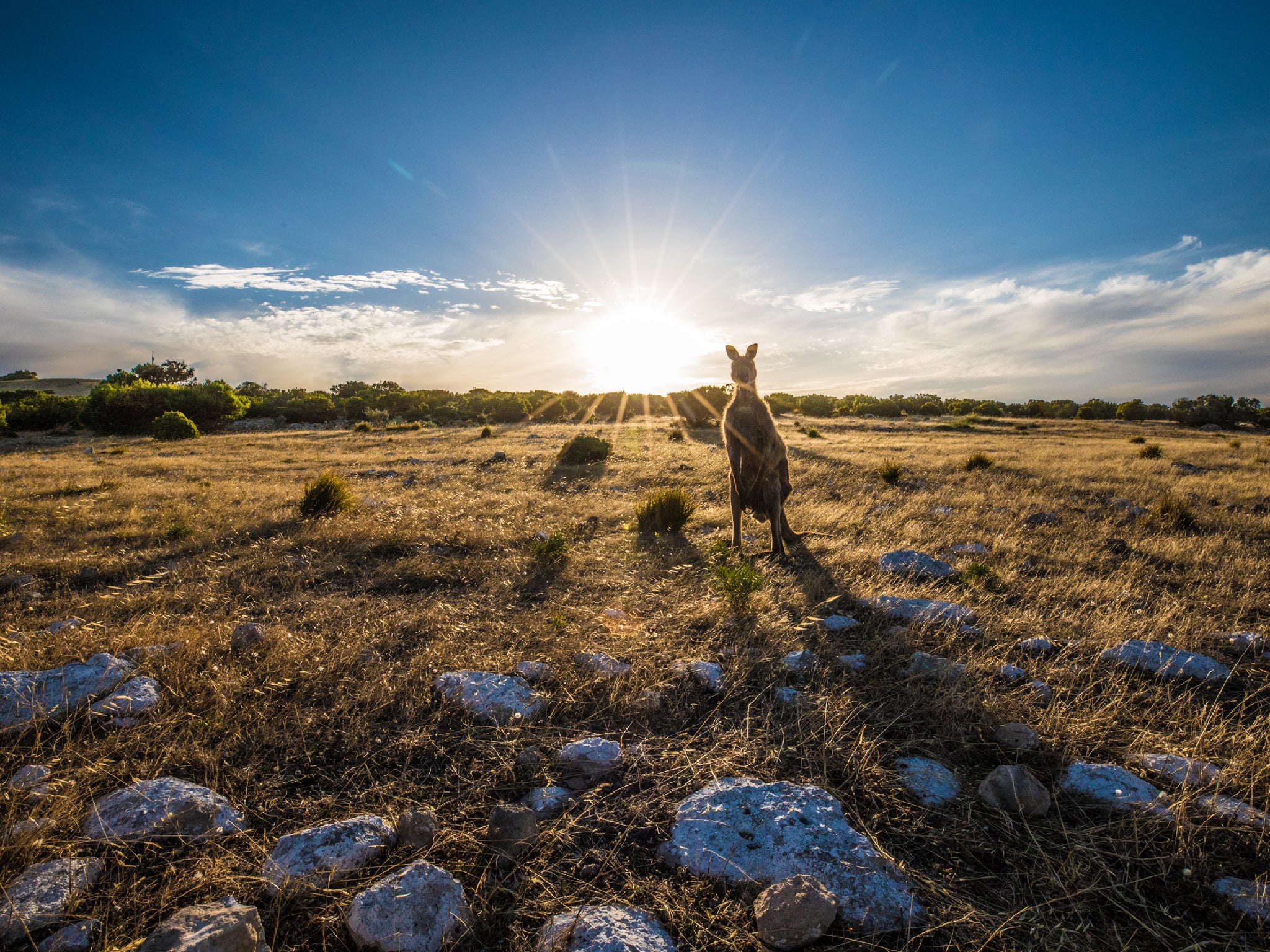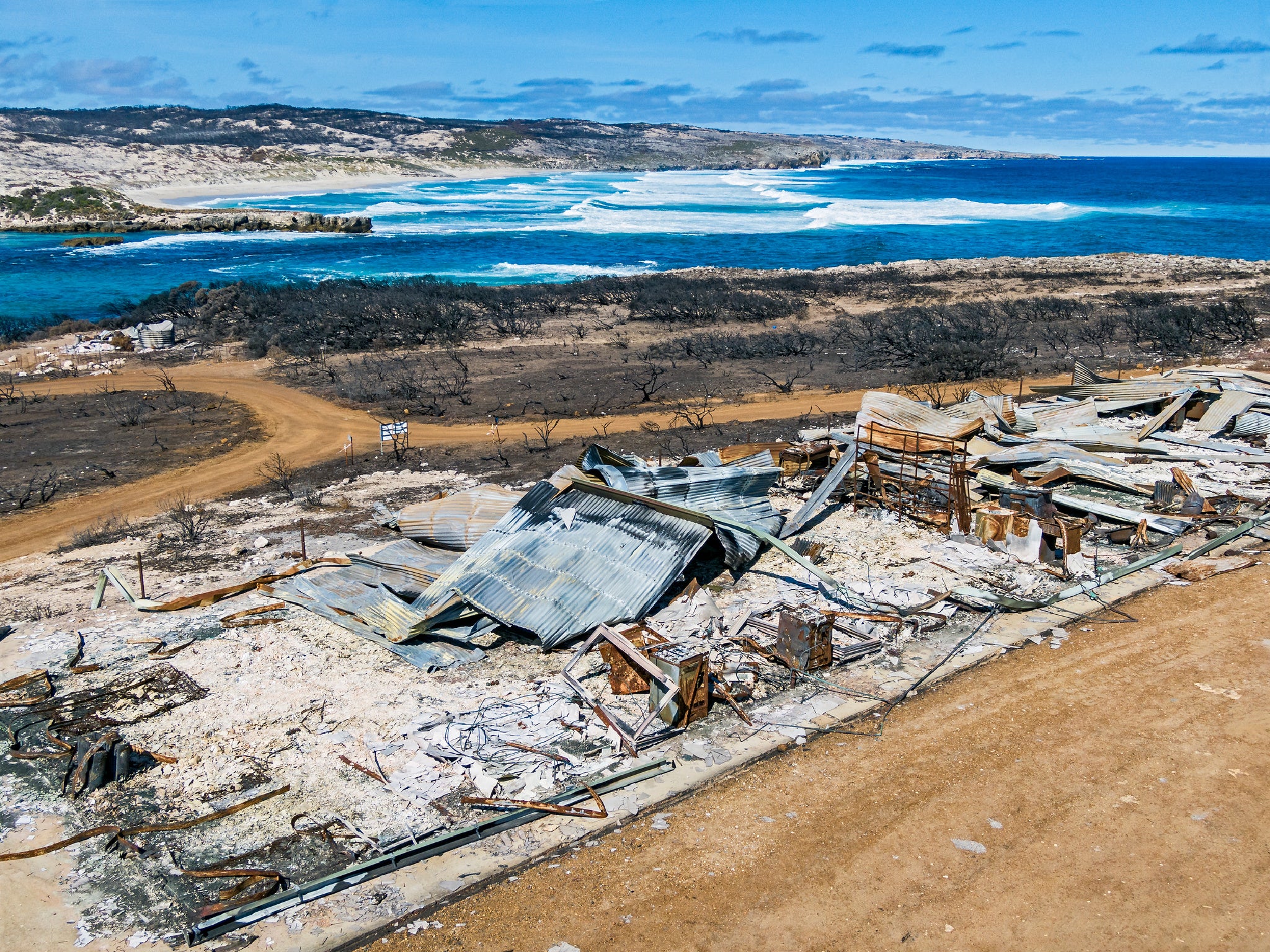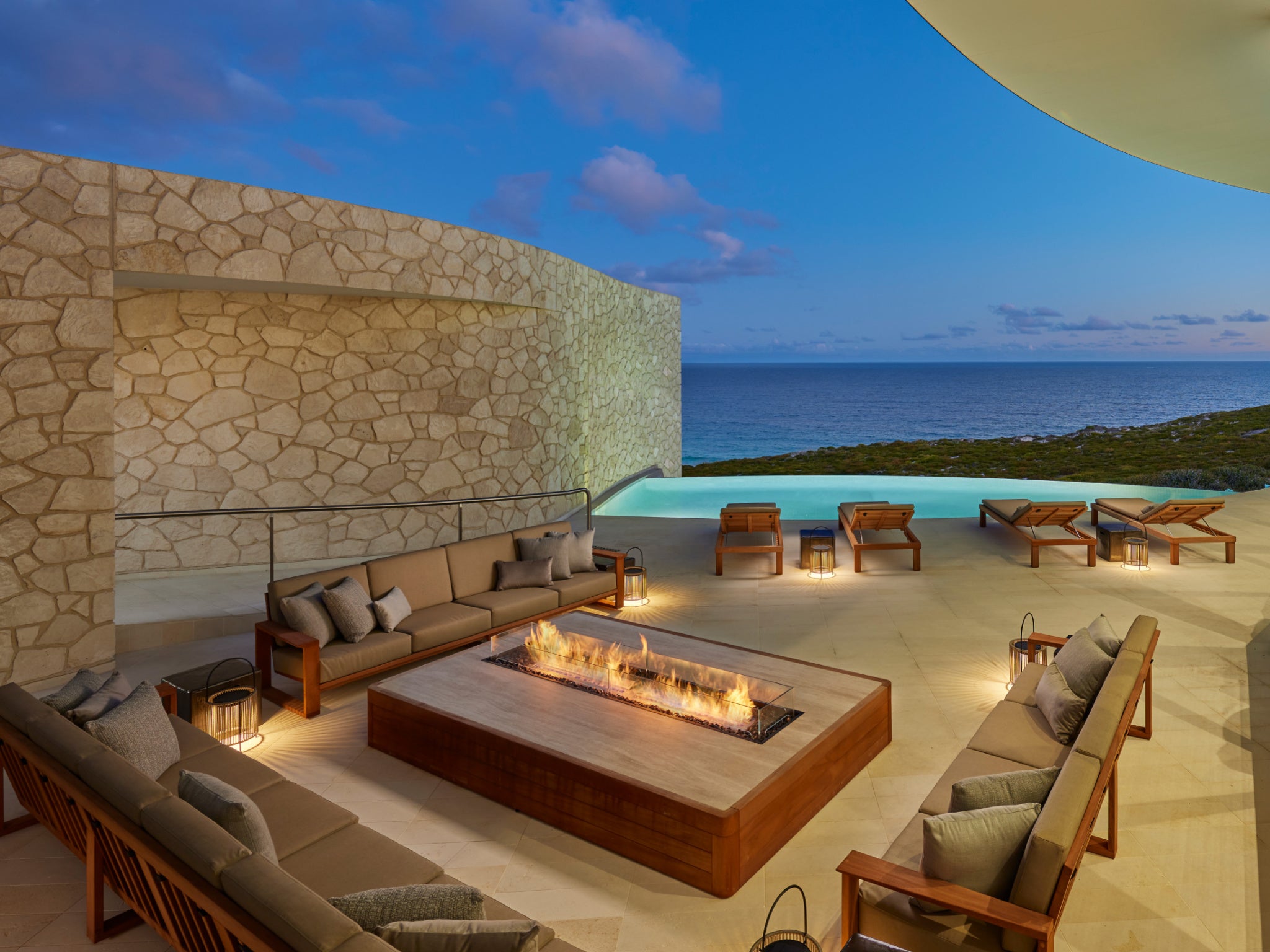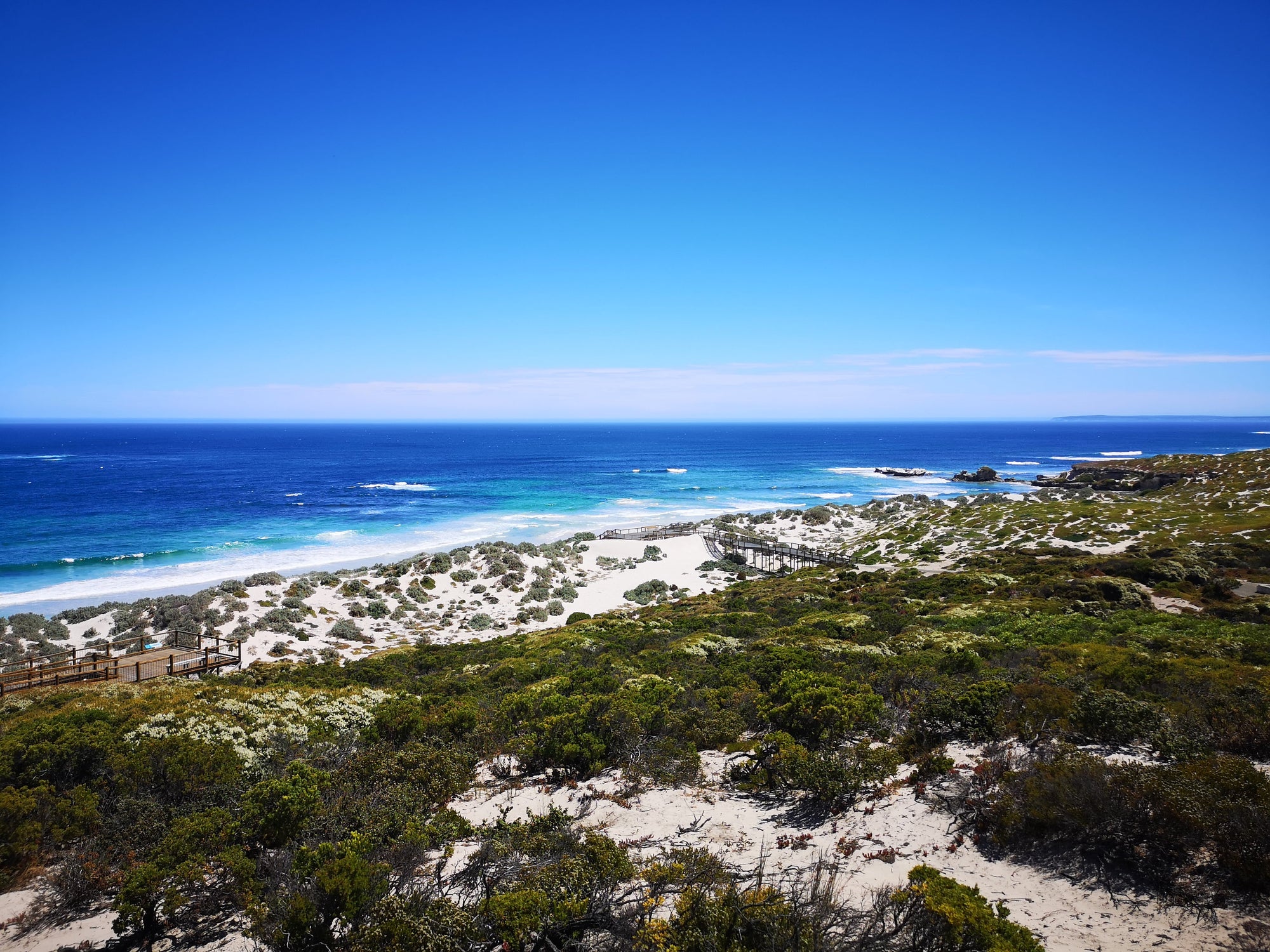This popular island was ravaged by fires – here’s what it’s really like to go back
The ‘Black Summer’ blazes scorched more than half of this wildlife-rich, rugged Australian outpost, but James Litston finds a place where the green shoots of recovery are blooming


It’s odd how so many Australian birds look prettier than they sound. It’s my first evening on Kangaroo Island and raucous shrieks and squawks are accompanying my seaside stroll in the sleepy village of American River. Though the calls are anything but musical, the birds that are making them – rainbow-bright lorikeets and silver-and-candyfloss galahs – are as beautiful as the stately gum trees growing along the shore, their sculptural, twisted trunks all weathered and worn by salt, sand and time.
Similarly unmelodic are the black cockatoos flapping over the treetops on slow, deliberate wingbeats that seem barely sufficient to keep them aloft. I smile when an Australian magpie chimes in as if showing the others how to do it. For me, these birds’ gentle warbling is the definitive sound of Down Under.
But bird calls of any kind are not to be taken for granted on Kangaroo Island (KI). In 2020 – just before the world shut down for Covid – this Australian outpost to the south of Adelaide was one of the worst-hit spots in the terrible Black Summer bushfires. This eastern part of the island (including American River) was spared, but a different fate played out elsewhere. Sparked by lightning, the fires engulfed 70 per cent of KI, devastating its western end and annihilating the wildlife.

I hear more about it next morning on a visit to eco-luxurious Southern Ocean Lodge, which burned to the ground but was rebuilt from scratch, reopening just this February.
“For almost a year afterwards, we heard no birdsong at all,” I’m told by general manager, Alison Hird. “Australians are used to bushfires but we’d never seen anything like this.” She goes on to explain how hot, dry weather, strong winds and a huge “fuel load” of forest tinder created a worst-case scenario fire whose intensity was sufficient to blister concrete and melt glass.
The all-new, linear, low-slung lodge is stunning. From its clifftop lounge, we admire the unblemished coastline stretching out below; but with rooms costing about £1,700 per night, it’s beyond my budget. Mine is a flying visit. As I drive along the unmade road that leads back to the highway, I note how four years of regeneration have seen the forest reach a uniform height, with bright green, fresh-looking regrowth standing only just taller than me.
Read more on Australia travel:
- Visiting David Attenborough’s ‘favourite place’ – why you should explore the reefs and rainforests of North Queensland
- The best Australia holidays to do in your lifetime, from the Kimberley to Kangaroo Island
- Melbourne city guide: What to do and where to stay in Australia’s free-spirited capital of cool

Above this layer, skeletal branches grasp at the sky, charred and lifeless. It looks as if someone has repainted the scenery without using a ladder. It’s a similar story across much of KI’s western end, including Flinders Chase national park, whose burned-down visitor centre still hasn’t reopened.
Far more fortunate was the landscape surrounding Ecopia Retreat in the heart of KI. Like Southern Ocean Lodge, it sits among hundreds of acres of nature reserve, but its handful of guest accommodations are way more affordable. I find my totally off-grid, rainwater-fed villa to be chic and comfortable, combining Scandi-inspired design with thoughtful, considered amenities from quality bedding and kitchen utensils to hampers packed with island-grown goodies.
Thanks to escaping the fires, Ecopia is rich in the wildlife for which KI is famed. Koalas snooze away the day in the block of trees beside my villa, while wallabies emerge at dusk to nibble on the lawn. Whether watching from the terrace or the living-room window’s banquette seating, the proximity of wildlife turns staying here into a constant connection with nature.
For even closer encounters, I head up the road to Kangaroo Island Wildlife Park: a zoo that played a pivotal role in rescuing animals from the fires. “Koalas were the worst hit,” says the staff member showing me around. “They have neither speed nor underground burrows, so their survival strategy is to climb as high as possible, which in a fire of this magnitude was disastrous.”

In total, it’s thought that half of the island’s animals were lost; and even many of those that were rescued did not survive their burns. “Of the 600 koalas we took in, only about half made it back to the wild,” she explains. “We also rehabilitated 400 kangaroos, echidnas, goannas and other animals. These survivors are now helping wildlife populations to bounce back.”
Of course, not all of KI’s wildlife was impacted by the fires. Later on, I follow the road to the south coast’s Seal Bay: a gorgeous, white-sand sweep known for its Australian sea lion colony. Several of the animals (found almost exclusively in South Australia) are stretched out, soaking up the sun after foraging in frigid waters. They howl and bark at one another as if they were a pack of dogs.
It’s golden hour by the time I start heading back towards Ecopia, the cooler temperatures encouraging kangaroos to stir. Groups of them graze roadside pastures: far fewer than there would have been four years before. But perhaps in another four years, any Black Summer memories will have been lost to the forest, and wildlife will be commonplace once more. That would really be worth coming back for.
Travel essentials
Self-catering villas at Ecopia Retreat start at AU$800 (£415) per night (two-night minimum stay).
Audley Travel combines Kangaroo Island with Adelaide and the winelands in a 12-day, tailor-made South Australia fly-drive from £4,450pp, including flights.
More information: southaustralia.com
Read more: Australia travel guide – everything you need to know before you go
Join our commenting forum
Join thought-provoking conversations, follow other Independent readers and see their replies
Comments
Bookmark popover
Removed from bookmarks